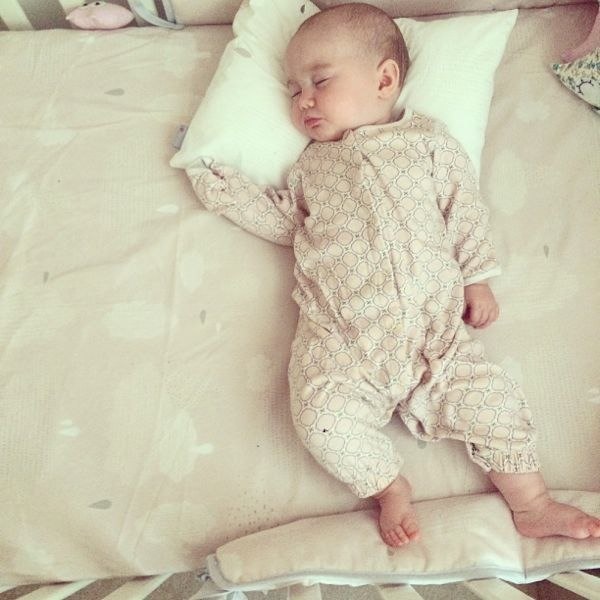Identifying Quality Materials
When choosing baby socks, the materials they’re made from greatly affect your child’s comfort and the longevity of the socks. Here’s what you need to know about fabric types and how to balance natural with synthetic options.
Pros and Cons of Different Fabrics
Cotton: A highly breathable fabric that’s soft on your baby’s skin. Cotton socks typically provide good warmth without overheating.
- Pros: Soft, breathable, absorbs moisture
- Cons: Can lose shape with frequent washing, less durable than synthetics
Wool: Renowned for its natural warmth, wool socks are a go-to for cooler climates. Wool can be itchy for some, but many modern wool baby socks are made to be softer and more comfortable.
- Pros: Warm, naturally odor-resistant
- Cons: Can be more expensive, may require specific care to avoid shrinkage
Bamboo: An eco-friendly fabric known for its softness and antibacterial properties. Bamboo socks are a comfortable option, similar to cotton but with a silkier feel.
- Pros: Antibacterial, soft, eco-friendly
- Cons: Durability can vary, sometimes mixed with synthetic fibers for strength
Spandex and Polyester: Often used in blends to add stretch and durability. These materials help socks retain their shape and can include eco-friendly grippers for non-slip benefits.
- Pros: Durable, maintains shape, can have non-slip features
- Cons: Not as breathable, can retain odors
Organic Vs. Synthetic Fibers
Organic Cotton Socks: Organic cotton is grown without the use of harmful pesticides and chemicals, making it a safer option for your baby’s skin and the environment.
- Pros: Reduced allergens, eco-friendly
- Cons: Often more expensive than regular cotton
Synthetic Fibers: Fabrics like polyester and spandex are man-made and designed for performance. They add elasticity to socks, which can be useful to keep them on wiggly baby feet.
- Pros: Stretchy, long-lasting, can be blended with natural fibers for comfort
- Cons: Less eco-friendly, may not be as gentle on sensitive skin
When selecting baby socks, consider your baby’s comfort and the specific needs you have: the climate you live in, potential allergies, and your environmental impact preferences. Balancing these factors will help ensure you choose the best material for your little one’s socks.
Understanding Sock Features
When selecting baby socks, your primary concerns should be how well they stay on tiny feet and their ability to prevent slips and falls. These features greatly contribute to your baby’s comfort and safety.
Elasticity and Staying Power
Baby socks with good elasticity are essential for ensuring they stay snug and don’t slip off. Look for options with tight elastic around the cuff as this helps the sock to stay in place without being too restrictive. Socks labeled with stay-on technology often have special elastic bands that keep them secure around the ankle or arch. Remember, the sock should be stretchy enough to accommodate your baby’s foot without leaving marks on their skin.
- Recommended Feature: Tight elastic around the cuff for snug fit
- Avoid: Socks that leave marks or restrict circulation
Non-Slip Details for Safety
Non-slip socks come equipped with non-slip grips or grippers on the sole to help your baby gain traction, especially once they start walking. These grips prevent slips on smooth surfaces and are particularly useful on hardwood or tile floors. Look for terms like non-slip grip, non-slip grippers, and grip socks when shopping. Some brands, like Zaples, specifically offer socks with non-slip grip features that are both functional and stylish.
- Look for: Socks with non-slip details on the soles
- Material: Grips are often made of rubber or silicone for maximum traction
Choosing Socks for Different Stages
As your baby grows, their needs change, and so does their wardrobe, including their socks. It’s important to choose the right type for each stage to ensure comfort and support.
Newborns and Preemies
For newborns and preemies, the primary focus is on warmth and comfort. Since these little ones will be spending most of their time sleeping, look for:
- Soft fabrics: Cotton or a cotton blend is ideal for maintaining warmth while allowing their delicate skin to breathe.
- Gentle elastic: A soft elastic band can help the socks stay on without being too tight.
Choose socks that are snug but not restrictive, to allow your newborn’s feet to grow without constraint. Newborn socks should also be high enough to stay on without slipping off, but not so tight that they leave marks on your baby’s skin.
Transitioning to Toddlerhood
As your baby begins to walk, you’ll want to transition to socks that support their mobility:
- Non-slip grips: Look for socks with rubberized or grippy bottoms to prevent slipping as they learn to walk.
- Knee-high baby socks: These can help protect your toddler’s legs as they move about and explore.
Materials should still be soft but also durable to withstand more activity. Wool baby socks are an excellent choice for cooler weather, providing extra warmth.
Finding the Perfect Fit and Style
When selecting baby socks, ensuring a snug fit and choosing a style that complements your baby’s wardrobe are essential. From the functional aspect of staying on to the fun aspect of fashion, picking the right pair is all about balance.
From Booties to Knee-Highs
Baby Booties are often the go-to for newborns since they provide full coverage and tend to stay on better than standard socks. For a secure fit, look for booties with adjustable snaps or Velcro closures.
Moving up, you have ankle socks and crew socks, which are ideal once your baby starts moving and exploring. Ankle socks are great for warmer days, while crew socks offer a bit more protection and warmth.
When it comes to older babies who are crawling and walking, knee-high socks can be perfect. Not only do they keep baby’s legs warm, but they also protect against scrapes. For knee-highs, consider a soft cotton blend fabric for breathability and a gentle stretch that grows with your baby’s feet.
- Best Baby Socks: Look for multi-pack options where you get variety as well as value.
- Organic Baby Socks: If you prefer natural materials, organic cotton socks are soft, safe for sensitive skin, and environmentally friendly.
Color and Pattern Selection
Your baby’s socks can be as vibrant and varied as your imagination. Whether you lean towards classic solids or enjoy playful animal designs and ruffles, the pattern on a baby sock can add a dash of personality to everyday outfits.
- Bold Colors: Can coordinate with the rest of your baby’s attire, making even a simple outfit pop.
- Trumpette is known for their whimsical designs and clever faux-shoe patterns, which can be a fun conversation starter.
Remember, while newborn baby socks might be more about function, as your baby grows, their socks can be a reflection of their budding personality. Have fun with your selections and make sure those tiny toes are both comfortable and stylish.
Health and Comfort Considerations
Choosing socks for your baby not only ensures their tiny toes stay warm but also plays a significant role in their overall comfort and skin health. It’s key to select socks that are gentle on the skin, provide warmth without causing overheating, and accommodate easy diaper changes.
Seamless Designs and Skin Care
When it comes to your baby’s skin, choosing seamless socks can make a big difference. Seamless designs reduce the risk of irritation and discomfort that can occur from friction against the skin. Your baby’s socks should be:
- Soft: To protect sensitive skin.
- Non-binding: To ensure proper circulation.
- Breathable: To avoid excess moisture that can lead to skin issues.
Look for socks made with gentle fabrics that feel smooth against the skin. If your baby is prone to eczema or other skin conditions, the right sock fabric can help minimize potential triggers.
Choosing the Right Sock for Weather Conditions
The weather plays a crucial role in how you dress your baby, and socks are no exception.
- For cooler conditions: Choose socks that are warm yet breathable to keep your baby’s feet snug without overheating.
- For warmer conditions: Opt for lighter socks that provide ventilation.
Some socks come with rubber grips on the soles, which can be particularly useful when your baby starts to stand or walk, providing a non-slip surface that supports safe movement.
Remember, during diaper changes, flexibility is important. Consider socks that are easy to pull on and off but snug enough to stay in place.
Purchasing and Care Tips
When selecting baby socks, you aim for comfort, functionality, and value. Your choices should also reflect easy care instructions to ensure the socks last longer, making them both practical and economical for you.
How to Get the Best Value
To get the best value when shopping for baby socks, consider the following:
- Read Reviews: Look for best baby socks that stay on, as recommended by other parents and caregivers. High ratings often indicate satisfaction with the product’s ability to remain on your baby’s feet.
- Organic Options: If you prefer natural materials, look for the best organic baby socks. They can offer a luxurious feel without compromising on an eco-friendly stance.
- Multipacks: Buying socks in multipacks can save you money in the long run and ensure you always have a pair on hand.
- Pull Tabs: Socks with pull tabs can make it easier to put them on and take them off, a feature especially appreciated during rushed moments.
- Gender-Neutral Colors: Opting for gender-neutral colors can offer versatility and longevity, especially if you’re planning for more children.
- Seasonal Choices: Purchase thicker socks, like Gerber white terry socks, for the winter months to keep your baby’s feet warm.
Care Instructions for Longevity
To care for baby socks and extend their life:
- Washing: Turn socks inside out before washing to prevent pilling. Use a gentle, baby-friendly detergent.
- Drying: Air dry baby socks when possible. If you must use a dryer, choose a low heat setting to maintain the fabric’s integrity.
- Storage: Organize baby socks in pairs to prevent loss. Sock ons or clips can be helpful to keep socks together during washing.
- Specialty Items: For items like Zutano baby booties, follow the specific care instructions provided by the manufacturer to maintain their best condition.
Remember, your preference and budget will guide your purchasing decisions, and following these care tips will help maximize the life of the baby socks you choose.




